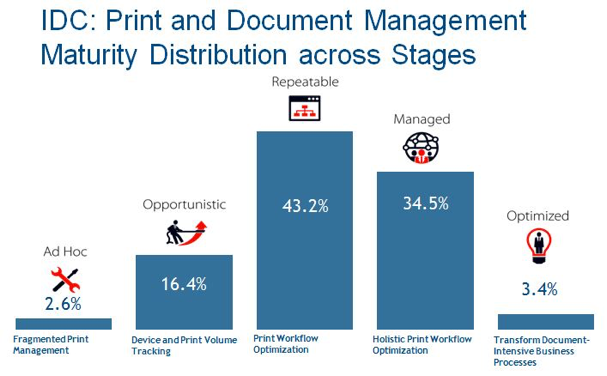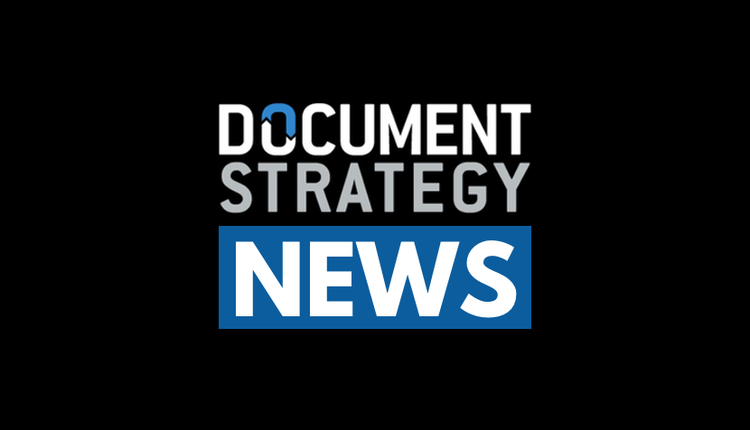
In October, I wrote about the IDC Print and Document Management (PDM) MaturityScape. The IDC MaturityScape provides a model that enables an organization to assess its print and document management maturity, uncover maturity gaps across business units, use the baseline to define short- and long-term goals and plan for improvements, prioritize managed print and document service engagements and/or print and document management technology, staffing and other related investment decisions and to evaluate managed print and document services providers and offerings.
IDC recently conducted a survey in the United States to benchmark this model. Respondents were information technology (IT), administrative, procurement and line-of-business professionals, from a broad range of company sizes and vertical industries, who are familiar with their organization's print and document infrastructure. Respondents were asked a variety of questions relating to the key dimensions of the PDM maturity model. The results indicated that there is a significant opportunity for American organizations to further digitize, automate and optimize their document-intensive business processes.

Very few US organizations (2.6%) are at the "Ad Hoc" stage, with little to no focus on PDM. Only 16.4% of respondents are at the "Opportunistic" stage. These organizations are getting their arms around the costs associated with print and document management but have not yet acted to impact those costs.
The largest percentage of respondents (43.2%) indicated that their organization was at the "Repeatable" stage of PDM maturity. These organizations have optimized their print and document infrastructure and processes but without a high-level management mandate and with a focus on the office environment.
Almost as many respondents (34.5%) indicated that their organization was at the more mature "Managed" stage. For these organizations, the print and document management initiative does have senior-level support and is deployed throughout the organization in a holistic fashion.
However, only 3.4% of respondents were at the highest level ("Optimized" phase) of PDM maturity. The progression from optimizing print and document infrastructure to leveraging that infrastructure to reengineer document-intensive business processes is a significant paradigm shift that has not yet been approached by many organizations.
As part of the PDM MaturityScape benchmark, we asked respondents about the benefits obtained from their print and document management initiative. We then segmented respondents into two broad categories: survivors and thrivers. Thrivers are those respondents who indicated that the benefits of their PDM initiatives had met or exceeded their expectations. Survivors did not experience benefits from their PDM initiatives or those benefits did not meet expectations.
Our research shows that the relative number of thrivers increases with the increasing levels of PDM maturity. At the Opportunistic stage, less than one-third of respondents were thrivers. This increased to three-quarters of respondents at the Repeatable stage and close to 90% at the Managed stage. Conversely, we saw fewer survivors as maturity increased. Less than 15% of survivors have ventured beyond the repeatable stage.
Organizations have the opportunity to reduce costs, increase productivity, increase security and compliance and mitigate risk by developing, acquiring or partnering for new competencies related to both print and electronic document workflows. The most mature organizations will reengineer print and document workflows to align with business goals, driving new business models, business transformation and better business outcomes.
Holly Muscolino is the research vice president of Document Solutions at IDC. She is responsible for all written research related to document services and the solutions that enable them, including managed print services, related software solutions, the scanning ecosystem and document outsourcing. Follow her on Twitter @hmuscolino.





![IDC graphics for Document Strategy[2]](https://cms-static.wehaacdn.com/documentmedia-com/images/IDC-graphics-for-Document-Strategy-2-.2474.widea.0.jpg)















